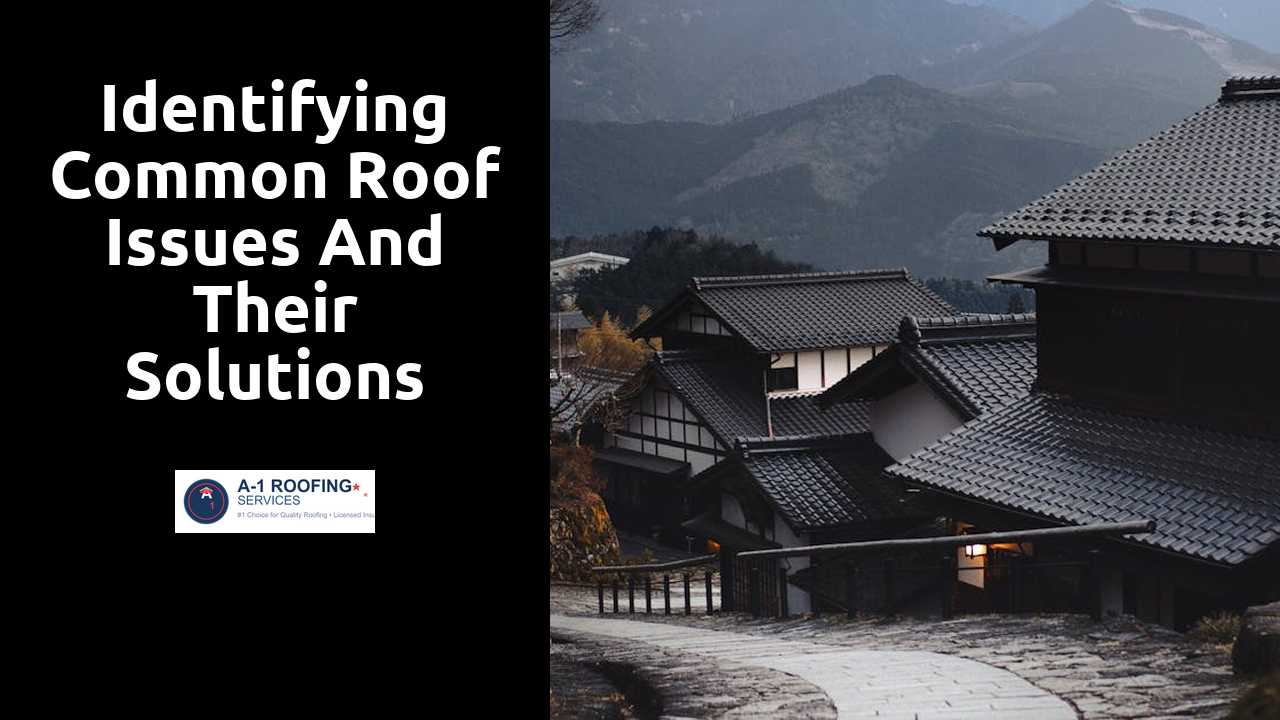
Identifying Common Roof Issues and Their Solutions
Table Of Contents
Sagging Roof Structure
A sagging roof structure often indicates underlying issues that can compromise the integrity of a home. Common causes include water damage, structural deficiencies, or improper installation of roofing materials. Over time, these factors can lead to noticeable dips or uneven areas on the roof surface, which may not only affect aesthetics but also contribute to leaks and further deterioration of the home.
Regular inspections are essential to identify the root cause of sagging. Homeowners should look for signs of water stains, mold, or sagging rafters in the attic. Addressing these issues promptly can prevent more significant problems down the line. Reinforcing the roof's structure may involve adding support beams or replacing damaged materials, restoring stability and ensuring long-term functionality.
This is an essential article for anyone looking to learn more about the topic.
Assessing the Underlying Issues
A sagging roof can be a sign of several underlying issues that require immediate attention. One common cause is the deterioration of structural components, such as rafters or trusses, which may be compromised by age or water damage. Additionally, excessive weight from snow accumulation or improper installation of roofing materials can further exacerbate the problem. Roofs that lack adequate support may also experience sagging, leading to more extensive damage over time and costly repairs.
Identifying the root cause of a sagging roof involves a thorough inspection of both the interior and exterior elements. Homeowners should look for signs of moisture intrusion, cracked or warped decking, and signs of foundation settlement. Engaging a professional contractor can provide valuable insights, as they can assess the condition of the roof and recommend appropriate solutions tailored to the specific issues identified. Addressing these problems early will help prevent further structural damage and preserve the integrity of the home.
Ice Dams in Winter
Frozen water accumulates along the eaves and gutters when snow melts on a warm roof and refreezes at the edges. This situation leads to ice dams that can cause significant damage to roofs and interiors. Water trapped behind the dam often seeps under shingles, potentially leading to leaks, mold growth, and deteriorating insulation. Homeowners may notice the first signs through icicles hanging from the roof or water stains on interior walls, indicating that a serious issue may be developing.
Preventative measures can significantly reduce the risk of ice dams forming. Ensuring proper insulation and ventilation in the attic helps maintain a consistent temperature across the roof surface. Continuous airflow allows snow to melt evenly, reducing the chance of melting water freezing at the eaves. Installing heated cables along the roof edge is another effective solution, as these help maintain a necessary temperature to keep water flowing freely off the roof. Regular maintenance, like clearing gutters of debris, can also contribute to preventing blockages that lead to ice formation.
Prevention and Treatment Methods
Ice dams form when snow on the roof melts, runs down to the eaves, and refreezes. To prevent this, it's essential to ensure proper insulation and ventilation in the attic. Keeping heat from escaping into the roof area helps maintain a consistent temperature and prevents the snow from melting too quickly. The installation of roof vents can also assist in allowing cold air to circulate and cool the roof surface.
In addition to preventive measures, regular maintenance of gutters and downspouts is vital. Ensuring that water can flow freely and preventing debris buildup can minimize the risk of ice dams forming. If ice dams do occur, homeowners may consider using a roof rake to carefully remove snow from the edges of the roof. Another method involves using a heated cable system designed specifically for roofs to help melt ice and prevent future occurrences. Regular inspections and prompt action can significantly reduce the risks associated with ice dams.
Poor Ventilation Effects
Inadequate ventilation in a roof space can lead to significant problems affecting both the integrity of the roof and the overall health of the home. Stagnant air carries moisture that, when trapped, promotes mold growth and wood decay. These factors can weaken structural components, creating costly repair needs and potential safety hazards. In addition, excess heat buildup in the attic can elevate indoor temperatures, making the air conditioning system work harder and driving up energy costs.
Another consequence of poor airflow is the distortion of insulation effectiveness. When insulation becomes damp, its thermal resistance diminishes, leading to higher energy bills and less comfort in the living space. Furthermore, properly ventilated roofing systems help regulate temperature fluctuations, reducing stress on roofing materials and extending their lifespan. Neglecting this aspect of a roof can result in premature wear and costly replacements.
Enhancing Roof Airflow
Proper airflow is essential for maintaining a healthy roof and extending its lifespan. Insufficient ventilation can lead to a variety of problems, including mold growth and ice dam formation. To enhance airflow, homeowners should consider installing ridge vents and soffit vents, which work together to create a balanced ventilation system. These vents allow warm, moist air to escape from the attic while facilitating the entry of fresh, cooler air, promoting a drier environment.
Attic fans can also boost circulation by actively drawing hot air out of the space. Ensuring that insulation is properly installed is equally important, as it prevents the obstruction of airflow pathways. Regular inspections of vents and filters help to identify any blockages or debris that may hinder airflow. By implementing these strategies, homeowners can effectively improve their roof's ventilation and contribute to its longevity.
Related Links
Tools Every Homeowner Should Have for Roof RepairEssential Techniques for Effective Roof Repairs